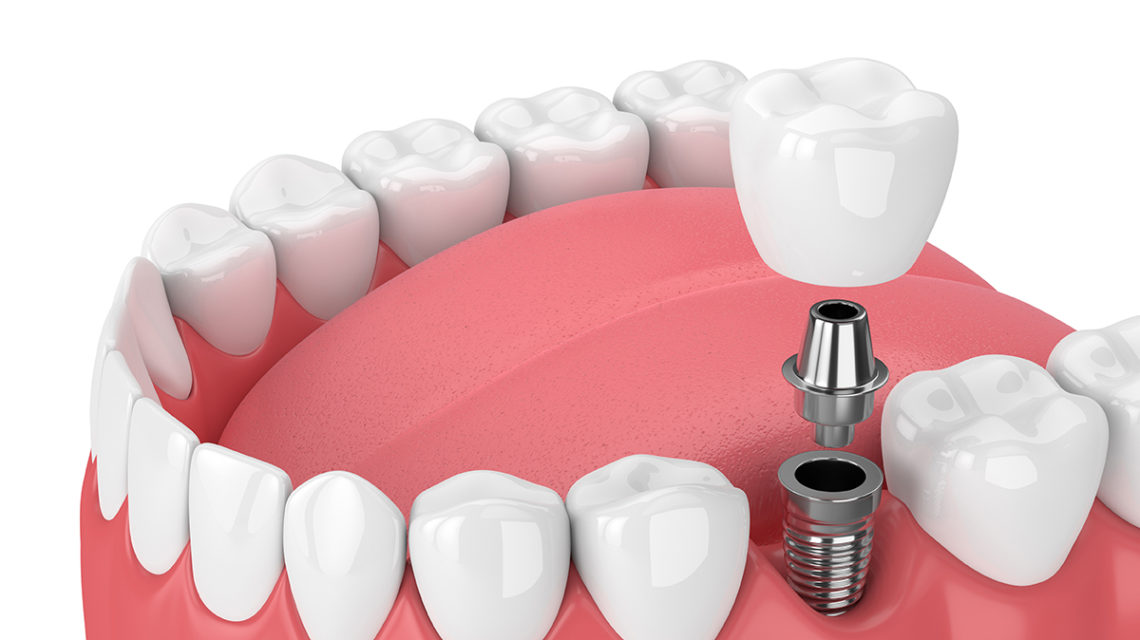Different Materials for Dental Implants and Dental Crowns

The innovations presented by dental implants and crowns have brought incredible advances in modern dentistry as patients can have solutions for loss of teeth and tooth damage for a very long period. La Jolla has many dental clinics that offer dental services for various oral health issues.
Dental implants are prosthetic tooth roots into which artificial teeth (or crowns) that are functional and meet the cosmetic appeal are placed.
The materials out of which implants or crowns are made are of particular importance when considering how long biocompatibility will last, how strong the implant will be, and how it will perform. A Family dentist in La Jolla can offer many different treatments based on the oral health conditions of the patient.
Materials Used for Dental Implants
Most dental implants consist of two main parts: an implant, which is placed within the jaw bone, and an abutment, which is used to connect the implant with the crown.
The materials selected for the above two components should be mechanically robust and biocompatible and should also allow for osseointegration. The principal constituents used for dental implants include:
1. Titanium
In most cases today, titanium and titanium alloys are the materials of choice for dental implants because they integrate well with the body and are capable of osseointegration with living bone.
This enables the implant to bond with the bone, thus forming a secure, robust support for the crown. Titanium implants are also strong, lightweight, and corrosion-resistant.
Titanium implants have a proven history of high success rates over prolonged periods. The implants are also graded, with the upper grades able to withstand more stresses in a clinical situation than the lower grades.
2. Zirconia
Recent developments have seen the introduction of zirconia as a ceramic material that can be used in place of titanium. Thanks to its strength, white color, and good body acceptance, zirconia implants are more often used by those patients who wish to avoid metal.
The white coloration of zirconia makes it popular among patients who have thin or semi-transparent gums because it blends better with the dental structure than grey titanium.
Materials Used for Dental Crowns
The crowns are the parts of the implant restoration that are most visible, and their material determines how the restoration looks, how strong it is, and how long it lasts. There are different types of dental crowns used over the years, with each of them presenting different advantages given the user’s needs:
1. Porcelain
Porcelain, due to its natural, when fitted, tooth-like appearance, remains one of the highly sought-after materials in making dental crowns. It is very aesthetic in that it copies the translucent nature and even the color of the natural enamel.
Most porcelain crowns are placed on anterior teeth, which are visible in the smile of the individual. These holistic crowns are made in such a way that the custom color blends with the adjacent tooth structures, rendering them difficult to detect as foreign objects.
2. Porcelain Fused to Metal, PFM
Lithium disilicate or glass ceramics are esthetic materials that comprise the whole crown. In the case of PFM crowns, a metal core is sandwiched between porcelain or ceramic layers of shells. This structure encourages both strength and aesthetics. The metal base enables the crown to resist chewing forces while the exterior material mimics a tooth.
3. Zirconia
Zirconia crowns have come to 100% strength and can last longer than any other crown-forming ceramic material. Due to their intensified surface strength, zirconia crowns resist damage even in heavy chewing units like molars.
4. Metal crowns
Metal crowns composed of gold, platinum, and some base metals like nickel–chromium are known for allowing maximum strength and durability to the prepared teeth. The restorations are very unwearable and are mainly used for molar teeth, which experience heavy chewing pressure.
Enhance your smile!
Dental implants and composite crowns are restoring solutions that enhance both function and aesthetics after tooth loss or damage. Thanks to progress in materials like titanium, zirconia, porcelain, and metal acrylic, patients can now utilize resilient and aesthetic results that can be custom-made to meet their specific needs.








